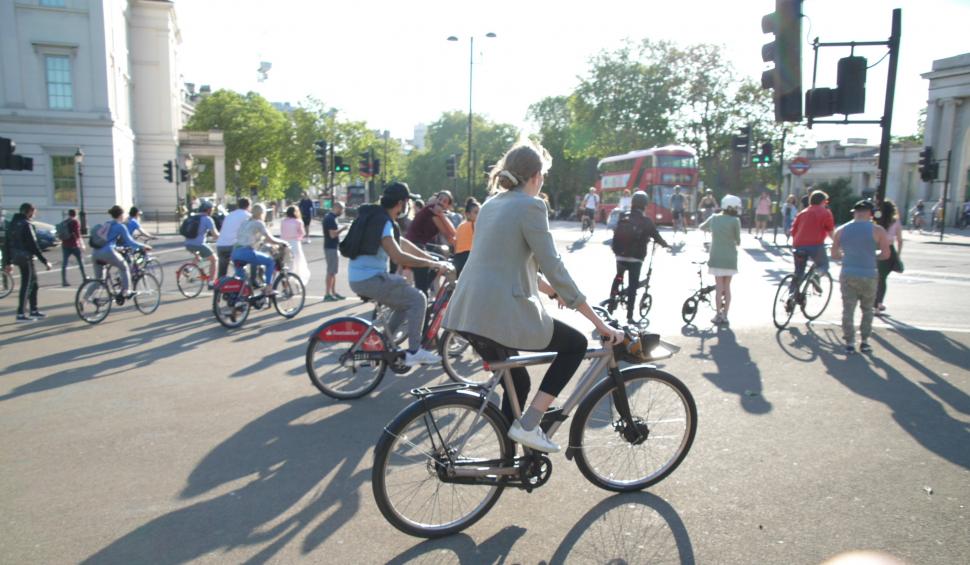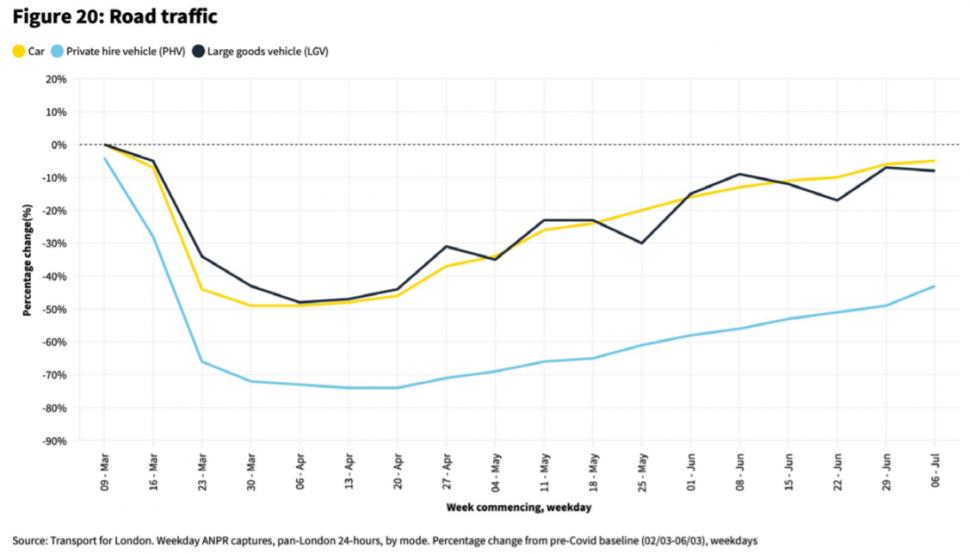- News
- Reviews
- Bikes
- Accessories
- Accessories - misc
- Computer mounts
- Bags
- Bar ends
- Bike bags & cases
- Bottle cages
- Bottles
- Cameras
- Car racks
- Child seats
- Computers
- Glasses
- GPS units
- Helmets
- Lights - front
- Lights - rear
- Lights - sets
- Locks
- Mirrors
- Mudguards
- Racks
- Pumps & CO2 inflators
- Puncture kits
- Reflectives
- Smart watches
- Stands and racks
- Trailers
- Clothing
- Components
- Bar tape & grips
- Bottom brackets
- Brake & gear cables
- Brake & STI levers
- Brake pads & spares
- Brakes
- Cassettes & freewheels
- Chains
- Chainsets & chainrings
- Derailleurs - front
- Derailleurs - rear
- Forks
- Gear levers & shifters
- Groupsets
- Handlebars & extensions
- Headsets
- Hubs
- Inner tubes
- Pedals
- Quick releases & skewers
- Saddles
- Seatposts
- Stems
- Wheels
- Tyres
- Health, fitness and nutrition
- Tools and workshop
- Miscellaneous
- Tubeless valves
- Buyers Guides
- Features
- Forum
- Recommends
- Podcast
news
 Hyde Park Corner 2.JPG
Hyde Park Corner 2.JPGWeekday cycling in London up 10 per cent on pre-lockdown levels – but car use almost back to former levels too
Weekday cycling in London is up 10 per cent compared to pre-lockdown levels, according to new research – but the biggest growth in people riding bikes has come during weekends. Meanwhile, car use is back to the levels seen before the coronavirus pandemic struck.
The figures come from analysis of Transport for London (TfL) data in the latest edition of The London Intelligence quarterly report from the think tank Centre for London, in partnership with the Policy Institute and the Centre for Urban Science and Progress at King’s College London.
“London’s cycling levels have surged above pre-crisis levels, and even tripled on some weekends – a greater growth than driving rates, albeit from a smaller base,” the report revealed.
“Additional analysis shows that the length of the average cycle hire trip has more than doubled, from 20 minutes in May 2019 to 42 minutes in May 2020.
“While weekend cycling has skyrocketed, weekday cycling saw a period of decline at the start of the pandemic but has since increased by 10 per cent.”
In part, that reflects changing travel patterns, with far fewer people commuting to workplaces in the city centre especially, whichever the mode of transport – so, including those cycling the entire journey, as well as those who reach the city by train from further afield, then complete their trip by bike.
The fact that cycling levels are up on weekdays despite the absence of many of those who would have travelled to work pre-lockdown suggests two things to us, in line with previous stories we have reported on – first, that many people and key workers especially have started commuting by bike for the first time, and secondly that more Londoners are using bikes for everyday journeys, for example to go to lcoal shops.
As for the increased duration of cycle hire trips, we suspect there are a couple of factors at work here, one being that many people who do have to travel to work are using the Santander Cycles scheme instead of travelling on public transport.
Perhaps more significantly, and tying in with the spikes in cycling seen at weekends, is the fact that while in previous years much of the leisure use of the hire bikes in spring and early summer has been by tourists.
But this year, particularly in the first couple of months of lockdown, it has been very noticeable, that they have been replaced by groups of younger Londoners, often from ethnic minorities, and who took advantage of quieter streets and good weather to cycle round the city and its parks at weekends, thus increasing the average trip length.
According to the report, cycling “is one area where the priorities of City Hall, London’s boroughs and government are aligned; there is therefore an opportunity for this shift to continue.”
The report said, however, that “Mirroring changes in other global cities, private car use across London has edged back to familiar levels, risking a return to poor air quality and increased congestion across the road network.
“According to Transport for London’s traffic cameras, private car traffic is five per cent below pre-crisis levels.
“Despite the introduction of congestion charging after hours and at weekends, private car use in the congestion charging zone is only four per cent below average.
“As e-commerce demand remains high and businesses begin to reopen, large good vehicle (LGVs) traffic increased to eight per cent below pre-crisis levels. In contrast, use of private hire vehicles (PHVs) remains low, at 43 per cent below.”
The report also highlighted the different impact of lockdown measures on consumer spending – and by implication, travel patterns – in the city centre and the town centres elsewhere in the capital.
“Within London, continued remote working has generated an uneven economic recovery,” it said.
“Insights from Mastercard’s Recovery Insights initiative on retail sales in a sample of London’s town centres shows that central London saw the steepest fall in the aggregate number of transactions across all categories during the first wave of the pandemic and the slowest recovery since the reopening of stores.
“In what is usually a peak season for central London’s economy, transaction volume for grocery and apparel shops in mid-July were down by 60 per cent compared to January 2020, and 80 per cent for restaurants.
“This is in stark contrast with smaller town centres (defined as those with relatively fewer transactions before the pandemic) such as Southall or East Ham.
“There, grocery spending remained at its usual level throughout the pandemic, while apparel and eating out transactions had already returned to or surpassed their pre-crisis level by July.”
The report continued: “In larger town centres such as Stratford, Ealing, Bromley and Orpington, the picture is more mixed with number of transactions running at about a third lower in July than in January 2020.
“The pandemic is clearly leading to a protracted economic crisis in central London, as shoppers and diners stay closer to home, shifting their shopping to their local town centres, and to some extent, larger ‘suburban’ centres.
“Though it has one of the fastest growing populations in the city, central London still has a relatively low residential density, meaning there are fewer residents to sustain services and businesses when visitor and commuter numbers are down.
Approximately 330,000 people live in central London, but pre-crisis, this figure would swell by as much as 80 per cent each day, as commuters, tourists and other visitors flocked to the centre,” the report added.
Simon joined road.cc as news editor in 2009 and is now the site’s community editor, acting as a link between the team producing the content and our readers. A law and languages graduate, published translator and former retail analyst, he has reported on issues as diverse as cycling-related court cases, anti-doping investigations, the latest developments in the bike industry and the sport’s biggest races. Now back in London full-time after 15 years living in Oxford and Cambridge, he loves cycling along the Thames but misses having his former riding buddy, Elodie the miniature schnauzer, in the basket in front of him.
Latest Comments
- mark1a 9 sec ago
This for me from cycling Santa this morning:
- wtjs 3 hours 15 min ago
In SE London, psychopath riders are the majority of people on bicycles Oh dear! another festive stealth anti-cyclist ☃️
- wtjs 3 hours 20 min ago
Well, you know the BMW drivers' saying: knock that house (hospital, social housing, care home, hospital...) down, could save 30 seconds on the trip!
- belugabob 4 hours 14 min ago
“It’s all very well to spend millions on facilities but if there’s no money for maintenance, it’s a waste of public money."...
- Spangly Shiny 4 hours 55 min ago
I had the pleasure of owning two of the featured builders here, in my history. When I joined the Army in 1971, I took with me my curly Hetchins:...
- Username 6 hours 26 sec ago
Could Siobhán paint it red and noone would notice it?
- Spangly Shiny 20 hours 49 min ago
To paraphrase Field of Dreams, "Build it right and they will come: and use it!"
- Rendel Harris 23 hours 10 min ago
And a Happy Christmas to you, road.cc staff!
- Rendel Harris 23 hours 58 min ago
The odds of not being able to find a single pedestrian - just one, note, "any pedestrian" - in an area containing more than about ten of them who...
- bikeman01 1 day 1 hour ago
I love how wannabe racer reviewers talk about fork flex under braking like their tyres are made of glue. I find traction gives long before fork flex.


Add new comment
1 comments
The vast majority of people I know who normally work in central london are still working from home, some have been told they won't be going back to work until next year.
I've started going back a couple days a week and from what I've seen, traffic is pretty much back to normal and while more people are cycling in certain areas, there are still an awful lot yet to return to work judging by parts of my route that are normally packed with cyclists at this time of year.
The trains are pretty empty from the suburbs is what I've been told - that's where your motorised traffic has come from. Outside central london cycling isn't pleasant for many people especially with the distances involved